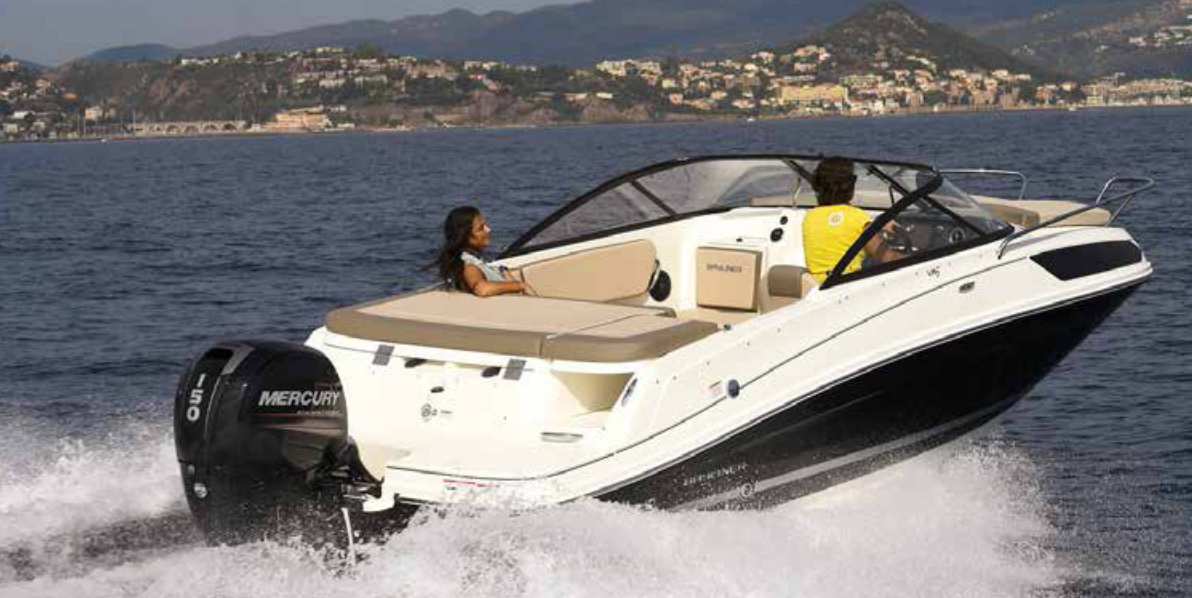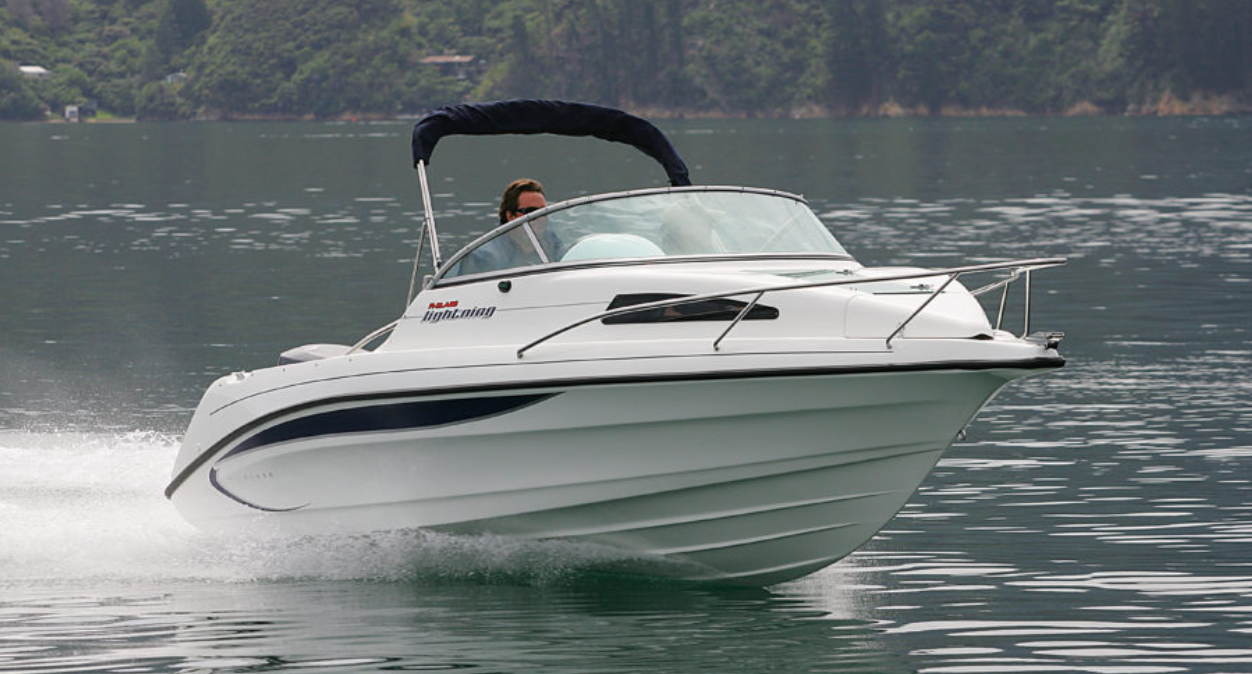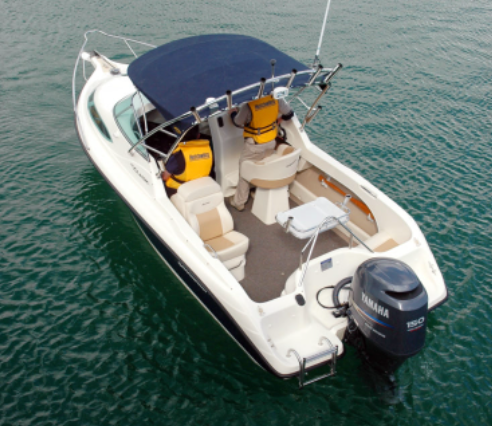Boat Size Caveat

Boat manufacturers vary in the way they present their models’ lengths. It often has more to do with marketing than accuracy. We looked at 12 different but similarly “sized” fiberglass cabin boats to find out just how much they vary.
The More Knowledge the Better
Buying a boat can be a daunting task, especially if you don’t have an allegiance or feeling towards any particular brand. However, if you arm yourself with some basic facts, especially specifications on the boats you are considering, you can make a more informed decision.
The length of a boat is one of the most important factors affecting the boat’s price. Obviously, a 23’ (7 m) boat is going to cost more than a 20’ (6 m) boat of a similar style and fit out, but are you getting an extra 3’ (1 m) of useable boat? The represented length as advertised does not always reflect the true size of the boat, so it pays to check. With the advent of integrally molded bow pulpits and built-in swim platforms, there has been much confusion over how a boat length should be properly represented. Are they part of the hull or not? Molded-in platforms are pretty much the norm today, but if you’re looking at a boat that’s a little older or you’re just not sure, it pays to doublecheck.

Real Numbers
We have put together a list of mid-size grp cabin boats that between them have overall lengths from 18’8” to 20’5” (5.70 m to 6.23 m), but actual hull lengths (minus any overhangs) around 18’ to 19’ (5.50 m to 5.80 m). But there you go, what is hull length? There are many ways to measure a boat. First, there is the measurement taken along its centerline from the outside of the boat aft to the outside of the boat forward. This measurement includes molded swim platforms, outboard engines, bowsprits, etc. This measurement is called the length overall (LOA).
Then there is the length of the hull (LOH), that is the actual molded hull from the bow (less overhangs) to the rear of the transom. But here too, there is room for interpretation, as to what is part of the hull and what is not. We have built-in or bolt-on pulpits as well as swim/boarding platforms, so should they be included? Bolt-ons are certainly additions to the hull and should not be included.
However, when it comes to Portofino sterns and boarding platforms if they are a part of the hull mold they probably should be included in the hull length measurement. This is still a bit of a grey area. Some builders regard the transom as the true aft end of the boat and that the measurement for hull length should be taken from there to the tip of the bow.

It’s therefore not correct to assume the 19’7” (6 m) boat you are buying has a true 19’7” (6 m) hull, as even taking out the bowsprit, you will conceivably have more than 1’6” (.5 m) of overhang from the transom. While the platform is usually still part of the hull and deck mold, it does not accurately reflect the area of the hull that is in the water when underway, but it is useable space.
It can be confusing and while manufacturers certainly use the boat length as a marketing tool — “The biggest 20’ (6 m) boat on the market,” — all it takes is a tape measure to find the truth.
You may also hear the term length of waterline or load waterline (LWL). This is the length of the boat, parallel to its centerline, at the line where it meets the water. It’s where you see the painted stripe around the hull on a moored boat. However, this isn’t a term used commonly for trailer boats and more applicable to larger launches and cruisers.
As we are looking at a group of trailer boats, the beam is not something that needs much consideration except when we are considering legal towing widths without a permit, which is 8’6” (2.59 m) in the United States and 8’5” (2.57 m) in Canada. An owner might get away with a boat with a 9’ (2.74 m) beam, but that’s up to the individual to determine if it’s worth it.

Inside Space
Looking at the boat from the outside can give the wrong impression of how big the boat is internally. While each boat has its own layout, they are all still similar. There’s a cabin forward with twin berths, a starboard helm console and a reasonably uncluttered cockpit.
Because all the boats are cabin models, it pays to check out the ratio between the cabin and the cockpit. Boats shorter than 19’7” (6 m) are not designed as overnighters, although plenty of owners still spend a night or two away on them. If you are one of them, then make sure the cabin berths (usually two singles with an infill) are around 5’11” to 6’6” (1.8 m to 2 m) long. Cabin heights vary but as long as there is enough sitting headroom – about 3’6” to 3’11” (1.1 m to 1.2m) — should be fine for two people
If you want a toilet, a simple Port-A-Potti works fine and can be hidden under a seat. A draw curtain across the bulkhead opening gives limited privacy.

The Cockpit
If fishing is your thing, the cockpit layout is all important and a potential buyer should make sure there is plenty of uncluttered space to cast a few rods. Deep toe kicks, rod storage either overhead in rocket launchers or in side trays, livewells, fish boxes and a good bait-prep station are all important. Many of these things can be added after and if you are going to use the boat for multi-purpose, such as towing water toys and family outings, it pays to have removable items so you can change out things like the bait-prep board for a ski pole and fish bins for seats. Seating is another area where the options vary and most manufacturers options to suit multiple activities.
An important measurement to look at is the coaming height or cockpit depth. A higher coaming is beneficial when fishing and a good safety feature, particularly when children are on board. For boats in the 20’ (6.1 m) range, 31’5” (80 cm) is a good guide. When comparing boats, it is also important to find out what you are getting for the price. What options are included as standard and what do you need to add to make the rig complete? Because of the items that some manufacturers offer as standard, – some even come with winches and electronics, rocket launchers and head.

Hull Shape
Deadrise is also something to look at when comparing boats. For boats in the 20’ (6.1 m) range, deadrise can range from 18.5 degrees at the transom to 24 degrees with a good average usually being around 20 degrees.
The deadrise of the hull, position of the strakes and width of the chines contribute to how a boat rides and handles and every manufacturer has its own ideas. Typically, the difference of only a few degrees in deadrise is hardly noticeable. However, when comparing a shallow V of about 14 degrees to a deeper V with 24 degrees, the advantages of the deeper V in rough water are evident. There can be a noticeable effect on stability at rest because the deeper V design will have a tendency to rock in waves.
Whenever possible, conduct a pre-purchase sea trial. Test the boat in rougher water to get a first-hand appreciation of just how she runs when the weather’s not so good. While there is a difference in hull lengths, most boats in this size range and class have a monohedreon (a geometrical figure having any number of planes) style hull with strakes, wide chines and a variable deadrise tapering from the bow to the stern.
Summary
We can’t cover everything a new boater should look for and not every design is for every buyer. We have not included things like hull weight or trailerable weight because these vary depending on engine options and how much gear you have aboard. However, as an estimate, towing weights would be anywhere between 2,866 lbs. and 3,306.93 lbs. (1,300 kg and 1,500 kg).
Choosing one of these boats in favor of the other most likely will come down to personal choice. You may find one model might have a unique feature that makes the difference for you. Happy hunting.